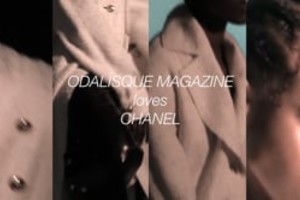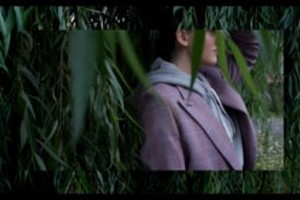Retrointrospective
Written by Art EditorMoley Talhaoui
”Retrointrospective” at Ganymede, Hjärnegatan 3, Stockholm
May 19-22, 2022
Moley Talhaoui is a brilliant artist who Odalisque has been following ever since our very first print issue. We met up with him for a chat about the upcoming show – “Retrointrospective” – his first in Stockholm in ten years. Make sure not to miss the opportunity to see his works live at Ganymede, this week only.
Lina Aastrup: This is your first show in Sweden in a long time, how come you so rarely exhibit here, even though you are based in Stockholm?
Moley Talhaoui: I have mainly worked with galleries in London and the US for many years now, so it just so happens that this is where my focus is normally. There is also something different about showing here – I wouldn’t call it difficult, but it feels special and important somehow.
LA: Could you tell us about your new exhibition?
MT: I was actually supposed to exhibit in Stockholm in 2020 already, but it was right when the pandemic hit, and everything was cancelled. “Retrointrospective” is comprised of large scale paintings created on site in Stockholm from 2017 until very recently, including three entirely new works that have never been shown before.
LA: Why this particular series of work?
MT: From 2017 and onwards, my artistic practice has expanded in width. I never work on specific themes for my exhibitions, every work I create is part of the same narrative. They build on each other, which is why organizing the exhibition chronologically makes sense.
LA: And this narrative is?
MT: In my work, I am constantly searching for the true, universal self that we are all part of, that predate the individual selves that make up Moley or Lina for example. The way I see it, we are all connected. I feel there is a certain expectation from society that coming from my perspective, I would have to focus on topics like precarity, inequality or being a racialised body. These are of course really important topics to deal with in art, but I never considered life to be that divided. When you see everyone as part of the same soul, it becomes clear that the differences between us are really just different contexts or different parts of the same journey in life.
LA: When looking at your paintings, I cannot help but noticing some recurring motifs, like the apparently skin-less body. What does this particular iconography mean to you?
MT: Everything I do, all the symbols and motifs, have a specific meaning in my world. But the beautiful thing is that they also function like a Rorschach test. The viewer brings their own references to the art experience, making their own reflections and assumptions about what they mean. Ultimately, what they see is more about them than about me. And that is something I would never want to deprive the audience of by sharing what I thought about when making them.
Regarding the bodies, I never aimed to make them look “skinless”, but I have heard that particular interpretation many times before. If you look back in time, to around 2008-2014, I made a lot of skeletons. After that I had a period of obsessing about Santería and conceptual spirituality. I think all spirituality is a reflection on what we all feel, it is just the conceptual framing that differs, be it Islam, Christianity or voodoo. These bodies I have been working on for a while now could be seen as a way to connect the skeleton, the spirit and the body. Either way, I feel like as if I have reached a point where I am connecting the dots and completing this whole narrative in a holistic way which is also why it felt so right to share my work through an exhibition at this moment in time.

































